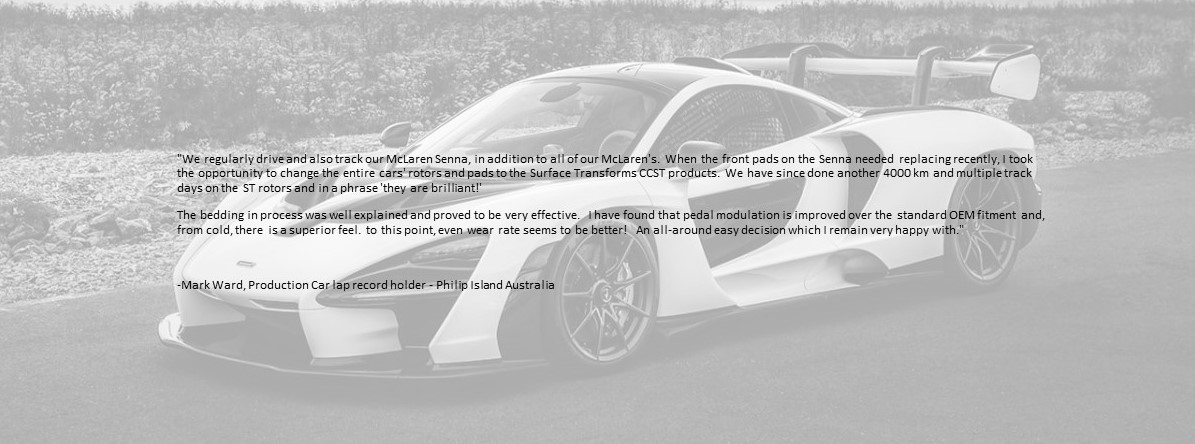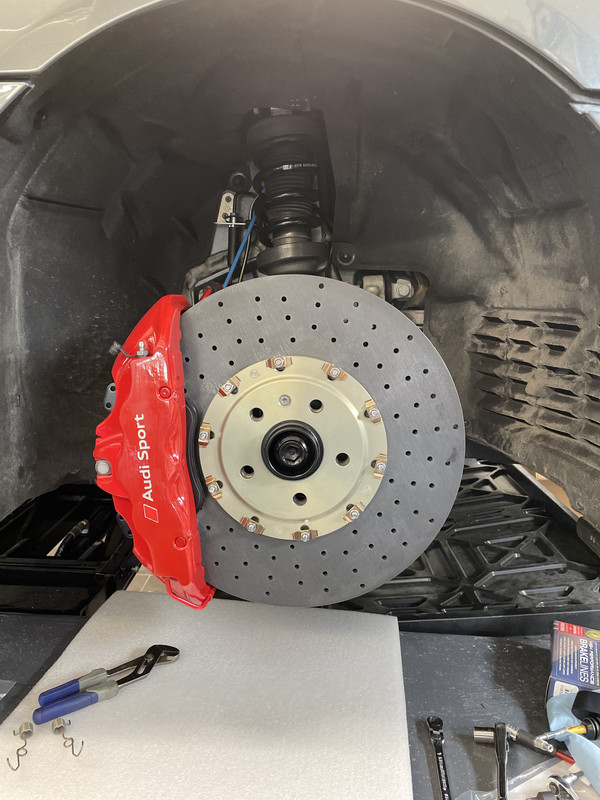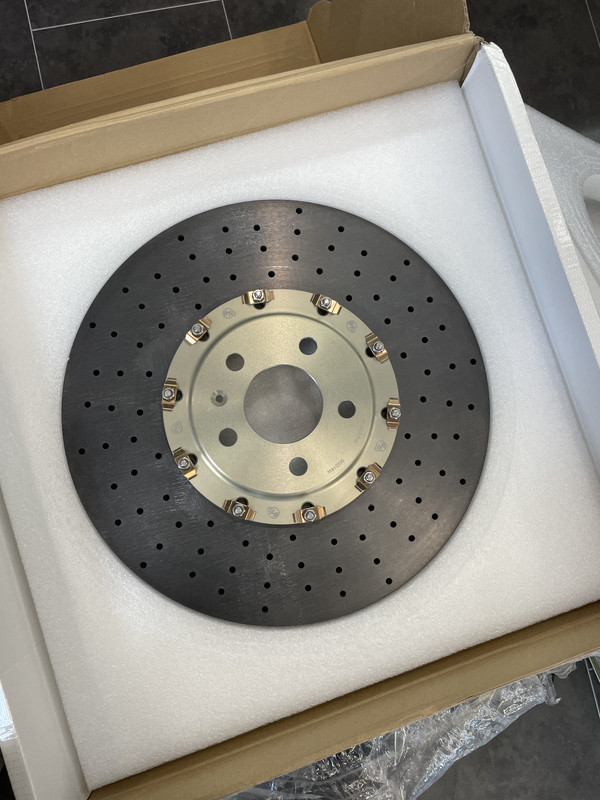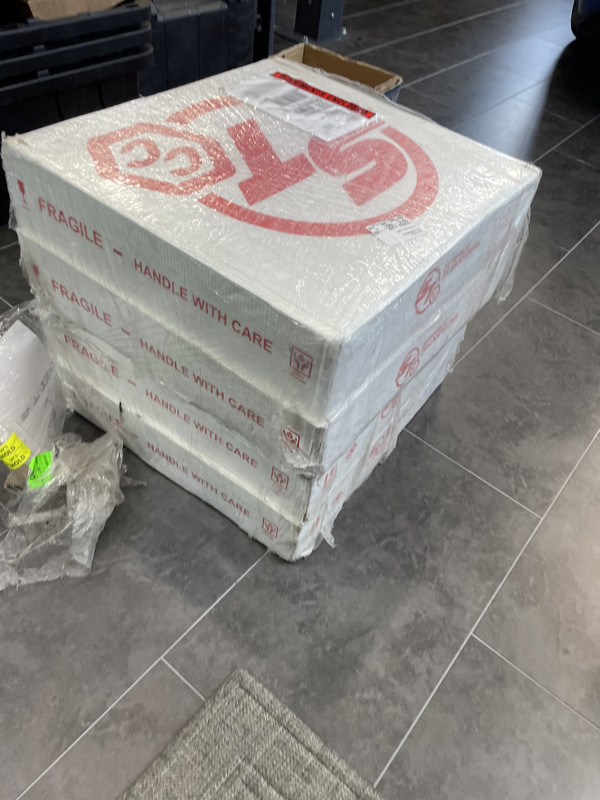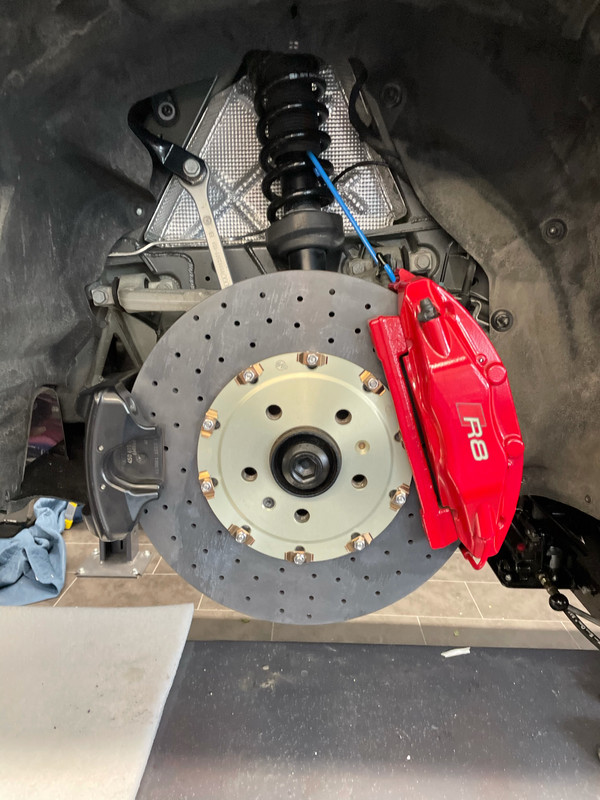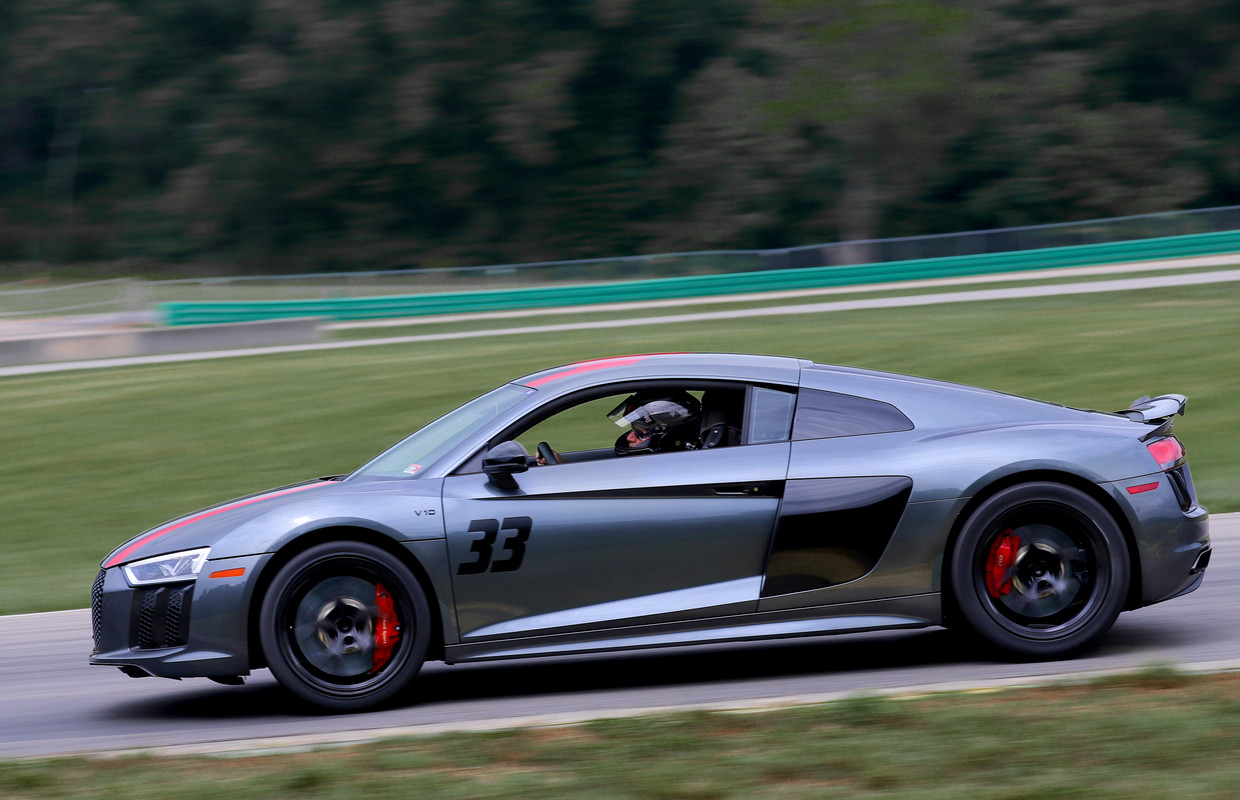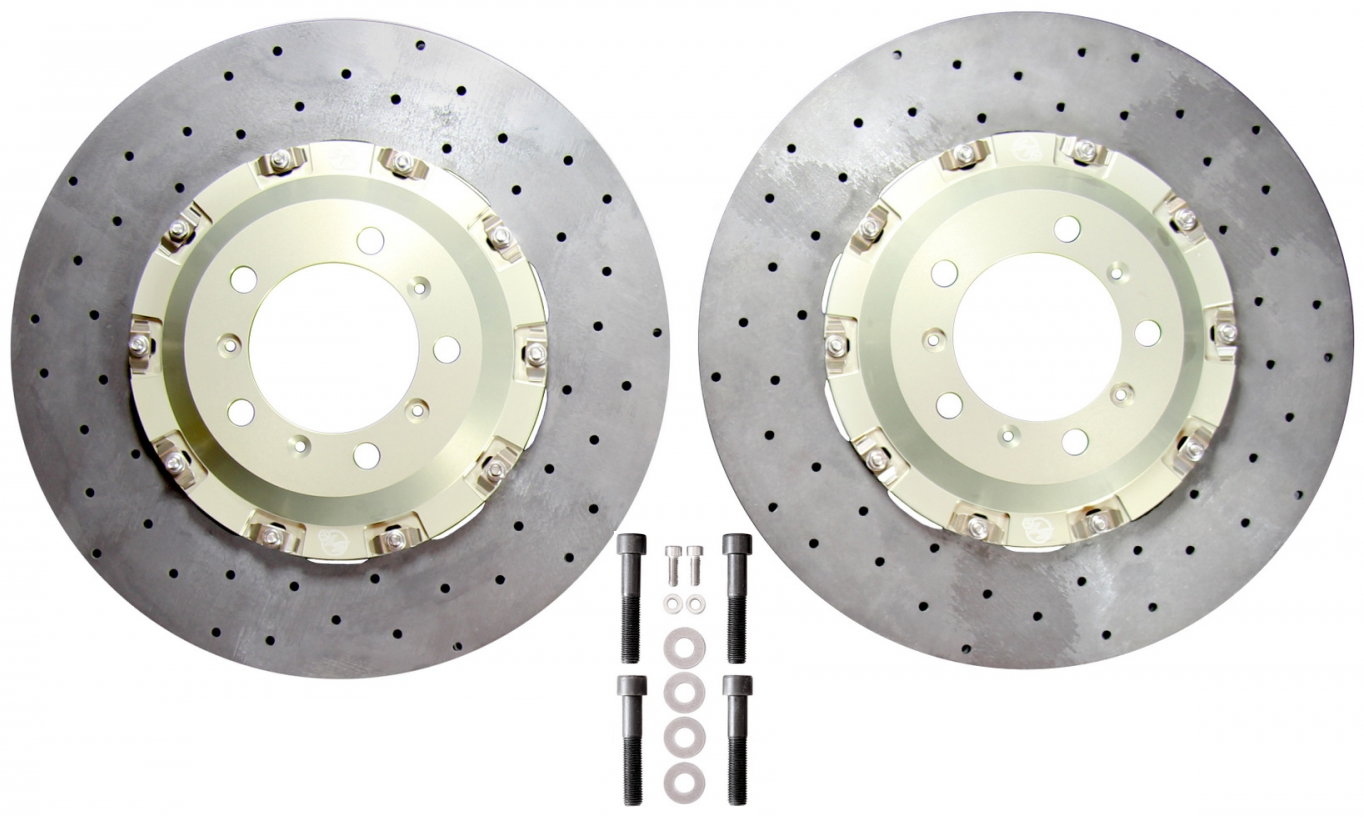Update 4/15/21-
Ok folks, I have TWO full sets (4 discs) of Surface Transforms discs inbound and due to arrive on the 15th of May and are first come, first serve.
The two kits are CCB replacement rotors, 380x38mm front, 356x32mm rear. Bolt-on application, no mods necessary.
The iron disc to carbon ceramic CFRC replacement fitment has been signed off by the engineers and pending payment, would be six to eight weeks for delivery. Either set will always be on a per-order basis due to cost.
Fits the R8, all years, Huracán all years, Gallardo 2009+, and RS5 B8.
Now the best part. We were expecting a $6750 cost per axle but it's now $6325 for two discs, $12,650 for all four wheels.
And we're going to do a group buy to kick things off
The group buy is strictly limited to no more and no less than 10 sets. It'll be $400 off each axle or $800 off total. And they will honestly never be this inexpensive again.
For anyone purchasing the first two sets inbound, if the group buy goes through, you'll be reimbursed $800.
DETAILS...
Purchase here: https://redmistracing.com/online-sh...mborghini-rs5-hurican-gallardo-brake-upgrade-carbon-ceramic-rotors-track-brakes
Bold statement I know. I've been working tirelessly to bring a new brake rotor offering/fitment for the Audi R8, RS5, Lamborghini Gallardo and Hurácan. I have CCB's on my car and won't track it due to fear of destroying them at COTA which isn't exactly a slow track. I've driven the Audi Driving Experience R8's there and man, they must go through an inordinate amount of consumables.
Well, the deed is done and we are now offering a high performance replacement carbon ceramic rotors for all generations and models of the Audi R8, the B8 RS5, Lamborghini Gallardo and Hurácan. These are nothing like the factory CCB's and are actually track rated at about 5,000 track miles before needing refurbishing. Read more on that below.
Pricing and details here: https://redmistracing.com/online-shop/ols/categories/cfrc-brakes
There are fitments for cars which originally came equipped with the fragile CCB brakes as well as the base iron rotor brake package. The rotors do not require caliper changes. That means all the base, iron brake cars can simply swap in the new rotors and pads and you're good to go! A far less expensive alternative than trying to find used calipers and used CCB discs of unknown quality.
CCB Cars-380x38mm front rotors, 356x34mm rear rotors (OE-sized, direct replacement)
Base, Iron Rotor Cars-380x34mm front rotors, 356x34mm rear (upgraded front rotor diameter, includes caliper spacer)
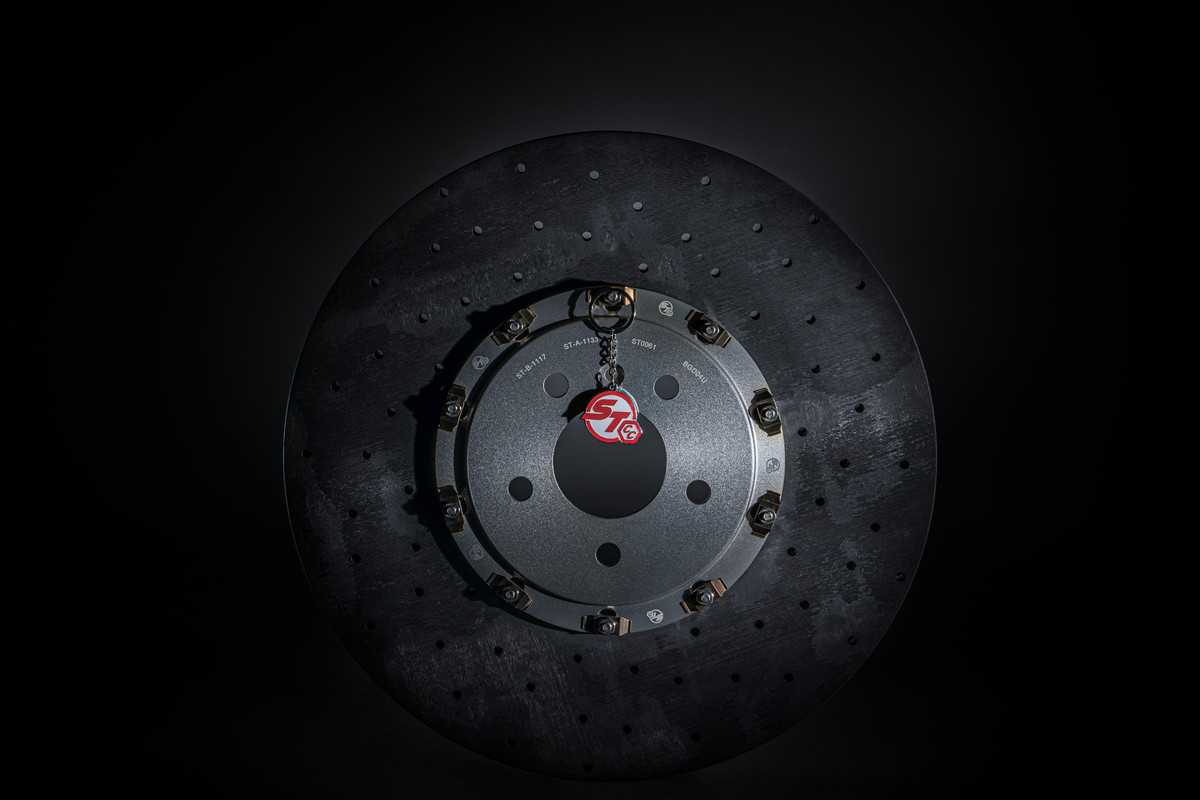
The technical stuff...CFRC, which stands for continuous fiber reinforced ceramic, is a mature technology used by many hyper car manufacturers including Koenigsegg since 2004. There are dozens of currently available fitments for Porsche, Ferrari, McClaren, Ford GT, Nissan GT-R, Mercedes AMG GT-S/R and Aston Martin. It's Audi and Lamborghini's turn.
Audi and Lamborghini use a CCB rotor (carbon ceramic brakes) which are made through a cast process which utilizes chopped carbon fiber. In theory, these brakes should offer a substantial performance gain over standard cast-iron rotors and in many ways they do. They also have two major pitfalls; replacements are prohibitively expensive and they tend not to do well on track, especially when overheated. As the resin is burned out of the disc, their ability to brake is lessened to the point where the discs must be replaced. Some owners have managed to do this in as little as one track day.
Enter the CFRC rotors from Surface Transforms which use a multidirectional matrix of continuous carbon fiber. Where the CCB rotors are cast in molds, CFRC rotors are an additive process and machined to the final dimensions. Not only are they more thermally efficient, they can be "renewed" good as new via an inexpensive process with quick turn-around.
This is, of course, the holy grail of carbon ceramic rotors. If you overheat and wear out a set of CCB rotors, there are currently no reliable options to refurbish them and can cost well over $20,000USD to replace. Not so with the CFRC rotors. Simply send them in for renewal and 10 days later, they're ready to go for another 5,000 track miles.
CFRC rotors have on average a TRACK LIFE of 5,000 miles before needing a refurbishment. The process is approximately $600 per rotor and therefore highly affordable and repeatable two times over the life of the disc. The rotors themselves come in at about half the cost of a set of CCB rotors. It's really a no-brainer. Track your car? Grab a set of these and don't worry about burning them up. Long term serviceability for street or track driven cars makes them cost efficient and there are brake pad options for each. In addition, these rotors are designed to work with carbon ceramic and normal cast-iron calipers. Owners of the standard brake-equipped models can now upgrade to a ceramic rotor and all of their benefits.
Pads are off the shelf Pagid pads and thus available from multiple vendors including RMR.
-Same weight as OE CCB discs, on average the fronts weigh 9 pounds.
-Half the cost of OEM CCB rotors (approx)
-3X the thermal conductivity which allow their use with standard calipers
-Track capable with a 5,000 mile or greater life before needing renewal
-Can be refreshed twice over the life of the disc (15,000+ track miles)
-Works with standard or ceramic-specific calipers depending on fitment
-Uses off the shelf Pagid pads, one for street, one for track. An RSC1 would be a great middle of the road option and you could use it on both the street and track, no pad swap!
-Same street life as OEM CCB rotors (aka lifetime of the vehicle)
-One rotor for both track and street! No need to swap rotors or risk damaging the OE CCB rotors.
A few glamour shots we just took...Didn't have an R8 available sadly!
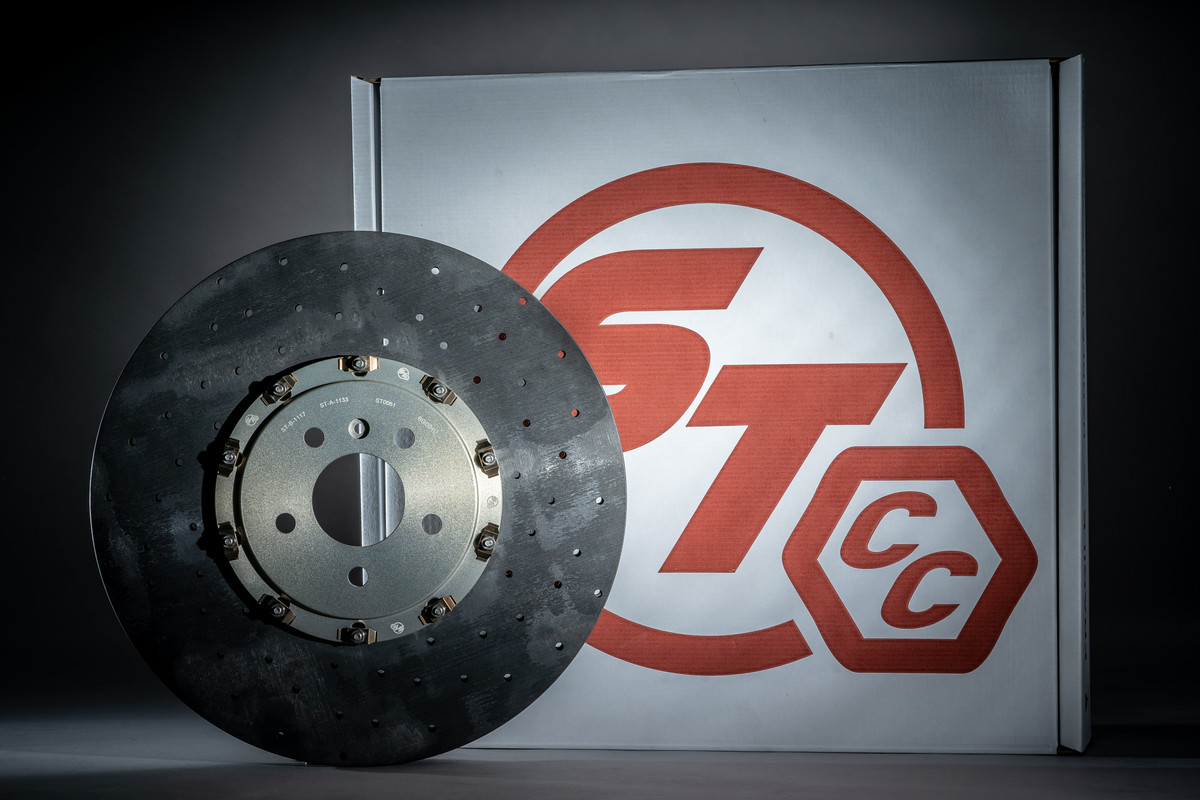
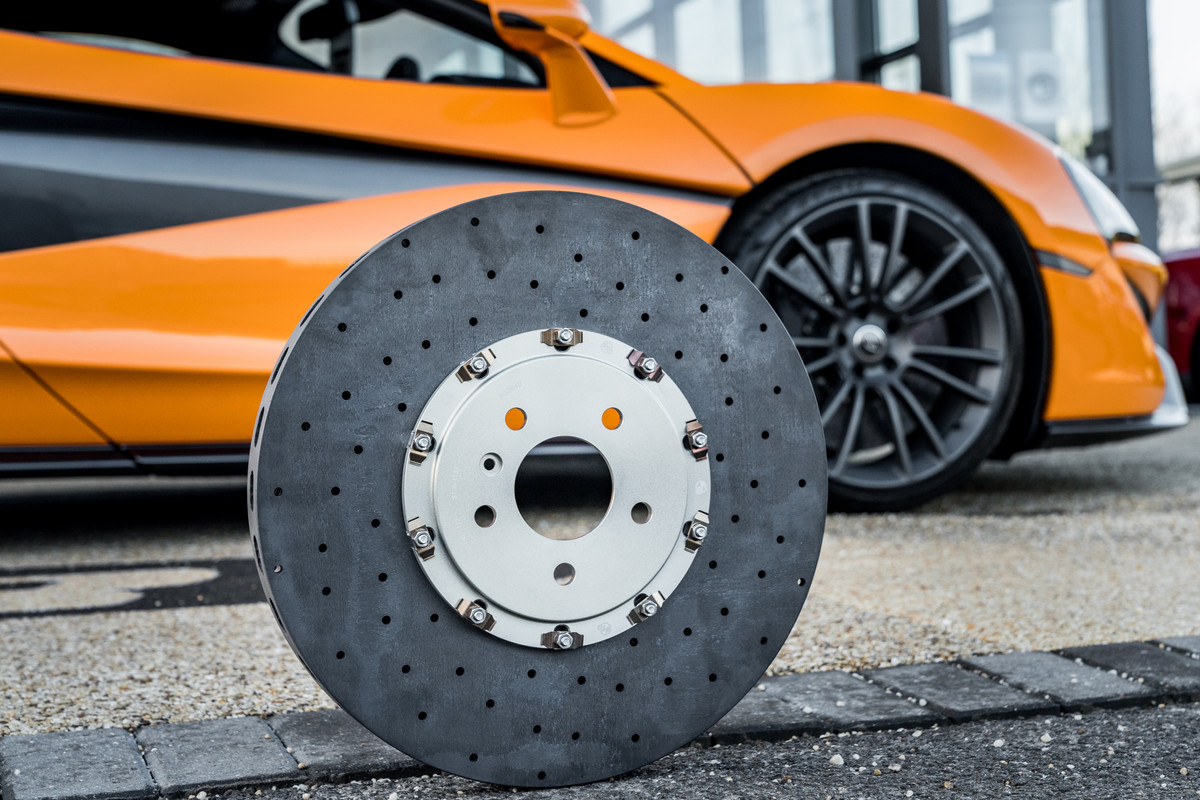

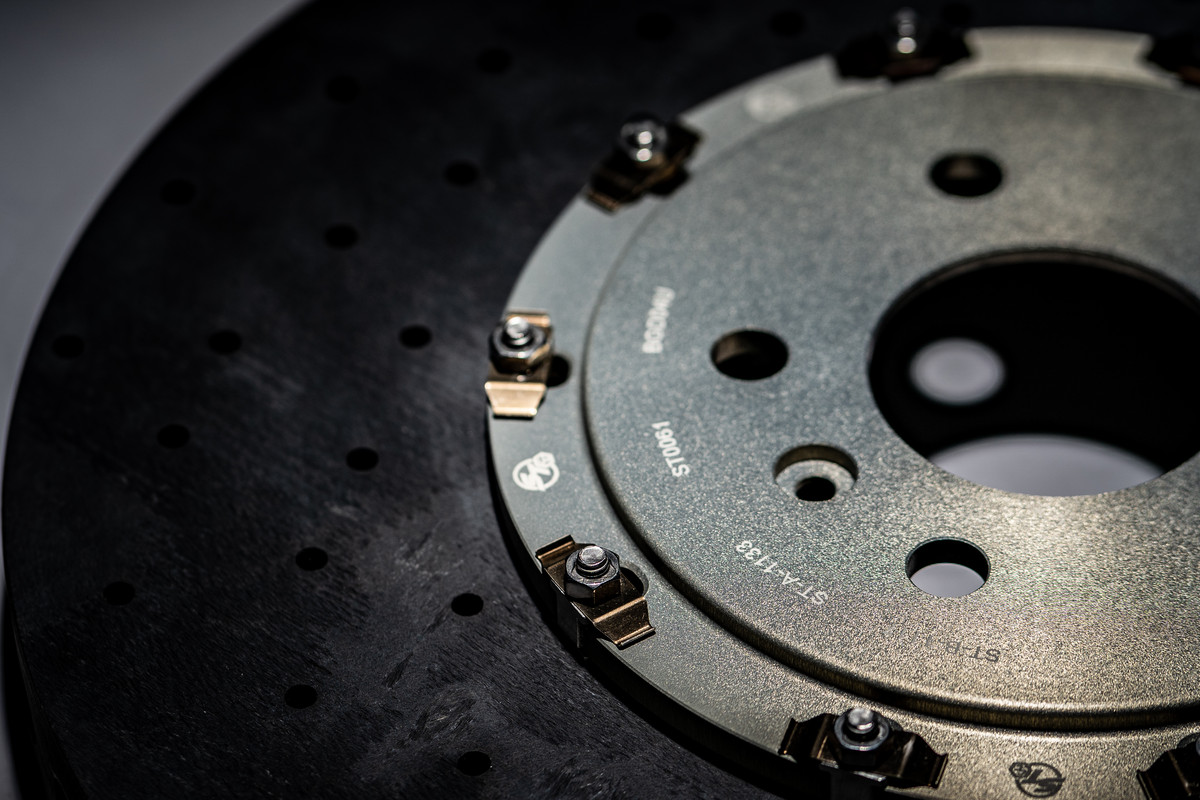
There are some Porsche track day guys who are getting four years of track days before needing their first refurbishment.
These are the same discs used by McClaren for their track brake upgrade package. If you go and use the configurator for the new 765LT, if you look at the brake options, you'll see the track upgrade. Those are ST discs. Two thirds of all Senna owners chose to spec their cars with these discs and those who didn't have most likely upgraded to the ST discs by now.
There are fitments for:
-Porsche
-Ferrari
-McClaren
-Ford GT (2017+)
-AMG GTS/R
-Nissan GT-R/Nismo
-Aston Martin Vantage V8
There hasn't been anything for Audi or Lamborghini until now. The discs are about 6-8 weeks out before first deliveries. I purchased a set of iron, two-piece 380x34mm rotors to speed up the development process and am delivering them to Surface Transforms in Liverpool for the base, iron rotor upgrade discs. They're currently working on the CCB direct replacement kit as we speak and that'll most likely be finished first.
Anyway, super excited about them. I posted up in the performance section too but figured there was a broader audience here (sorry for the cross post!). Guys with a damaged or worn discs will now have a less expensive option. Hell, guys with discs in good shape could sell the old on eBay and recoup the costs and then some. Food for thought! These are the recommended replacement discs for Porsche guys who toast their PCCB's.
Any questions, just ask.
Ok folks, I have TWO full sets (4 discs) of Surface Transforms discs inbound and due to arrive on the 15th of May and are first come, first serve.
The two kits are CCB replacement rotors, 380x38mm front, 356x32mm rear. Bolt-on application, no mods necessary.
The iron disc to carbon ceramic CFRC replacement fitment has been signed off by the engineers and pending payment, would be six to eight weeks for delivery. Either set will always be on a per-order basis due to cost.
Fits the R8, all years, Huracán all years, Gallardo 2009+, and RS5 B8.
Now the best part. We were expecting a $6750 cost per axle but it's now $6325 for two discs, $12,650 for all four wheels.
And we're going to do a group buy to kick things off
The group buy is strictly limited to no more and no less than 10 sets. It'll be $400 off each axle or $800 off total. And they will honestly never be this inexpensive again.
For anyone purchasing the first two sets inbound, if the group buy goes through, you'll be reimbursed $800.
DETAILS...
Purchase here: https://redmistracing.com/online-sh...mborghini-rs5-hurican-gallardo-brake-upgrade-carbon-ceramic-rotors-track-brakes
Bold statement I know. I've been working tirelessly to bring a new brake rotor offering/fitment for the Audi R8, RS5, Lamborghini Gallardo and Hurácan. I have CCB's on my car and won't track it due to fear of destroying them at COTA which isn't exactly a slow track. I've driven the Audi Driving Experience R8's there and man, they must go through an inordinate amount of consumables.
Well, the deed is done and we are now offering a high performance replacement carbon ceramic rotors for all generations and models of the Audi R8, the B8 RS5, Lamborghini Gallardo and Hurácan. These are nothing like the factory CCB's and are actually track rated at about 5,000 track miles before needing refurbishing. Read more on that below.
Pricing and details here: https://redmistracing.com/online-shop/ols/categories/cfrc-brakes
There are fitments for cars which originally came equipped with the fragile CCB brakes as well as the base iron rotor brake package. The rotors do not require caliper changes. That means all the base, iron brake cars can simply swap in the new rotors and pads and you're good to go! A far less expensive alternative than trying to find used calipers and used CCB discs of unknown quality.
CCB Cars-380x38mm front rotors, 356x34mm rear rotors (OE-sized, direct replacement)
Base, Iron Rotor Cars-380x34mm front rotors, 356x34mm rear (upgraded front rotor diameter, includes caliper spacer)

The technical stuff...CFRC, which stands for continuous fiber reinforced ceramic, is a mature technology used by many hyper car manufacturers including Koenigsegg since 2004. There are dozens of currently available fitments for Porsche, Ferrari, McClaren, Ford GT, Nissan GT-R, Mercedes AMG GT-S/R and Aston Martin. It's Audi and Lamborghini's turn.
Audi and Lamborghini use a CCB rotor (carbon ceramic brakes) which are made through a cast process which utilizes chopped carbon fiber. In theory, these brakes should offer a substantial performance gain over standard cast-iron rotors and in many ways they do. They also have two major pitfalls; replacements are prohibitively expensive and they tend not to do well on track, especially when overheated. As the resin is burned out of the disc, their ability to brake is lessened to the point where the discs must be replaced. Some owners have managed to do this in as little as one track day.
Enter the CFRC rotors from Surface Transforms which use a multidirectional matrix of continuous carbon fiber. Where the CCB rotors are cast in molds, CFRC rotors are an additive process and machined to the final dimensions. Not only are they more thermally efficient, they can be "renewed" good as new via an inexpensive process with quick turn-around.
This is, of course, the holy grail of carbon ceramic rotors. If you overheat and wear out a set of CCB rotors, there are currently no reliable options to refurbish them and can cost well over $20,000USD to replace. Not so with the CFRC rotors. Simply send them in for renewal and 10 days later, they're ready to go for another 5,000 track miles.
CFRC rotors have on average a TRACK LIFE of 5,000 miles before needing a refurbishment. The process is approximately $600 per rotor and therefore highly affordable and repeatable two times over the life of the disc. The rotors themselves come in at about half the cost of a set of CCB rotors. It's really a no-brainer. Track your car? Grab a set of these and don't worry about burning them up. Long term serviceability for street or track driven cars makes them cost efficient and there are brake pad options for each. In addition, these rotors are designed to work with carbon ceramic and normal cast-iron calipers. Owners of the standard brake-equipped models can now upgrade to a ceramic rotor and all of their benefits.
Pads are off the shelf Pagid pads and thus available from multiple vendors including RMR.
-Same weight as OE CCB discs, on average the fronts weigh 9 pounds.
-Half the cost of OEM CCB rotors (approx)
-3X the thermal conductivity which allow their use with standard calipers
-Track capable with a 5,000 mile or greater life before needing renewal
-Can be refreshed twice over the life of the disc (15,000+ track miles)
-Works with standard or ceramic-specific calipers depending on fitment
-Uses off the shelf Pagid pads, one for street, one for track. An RSC1 would be a great middle of the road option and you could use it on both the street and track, no pad swap!
-Same street life as OEM CCB rotors (aka lifetime of the vehicle)
-One rotor for both track and street! No need to swap rotors or risk damaging the OE CCB rotors.
A few glamour shots we just took...Didn't have an R8 available sadly!




There are some Porsche track day guys who are getting four years of track days before needing their first refurbishment.
These are the same discs used by McClaren for their track brake upgrade package. If you go and use the configurator for the new 765LT, if you look at the brake options, you'll see the track upgrade. Those are ST discs. Two thirds of all Senna owners chose to spec their cars with these discs and those who didn't have most likely upgraded to the ST discs by now.
There are fitments for:
-Porsche
-Ferrari
-McClaren
-Ford GT (2017+)
-AMG GTS/R
-Nissan GT-R/Nismo
-Aston Martin Vantage V8
There hasn't been anything for Audi or Lamborghini until now. The discs are about 6-8 weeks out before first deliveries. I purchased a set of iron, two-piece 380x34mm rotors to speed up the development process and am delivering them to Surface Transforms in Liverpool for the base, iron rotor upgrade discs. They're currently working on the CCB direct replacement kit as we speak and that'll most likely be finished first.
Anyway, super excited about them. I posted up in the performance section too but figured there was a broader audience here (sorry for the cross post!). Guys with a damaged or worn discs will now have a less expensive option. Hell, guys with discs in good shape could sell the old on eBay and recoup the costs and then some. Food for thought! These are the recommended replacement discs for Porsche guys who toast their PCCB's.
Any questions, just ask.


